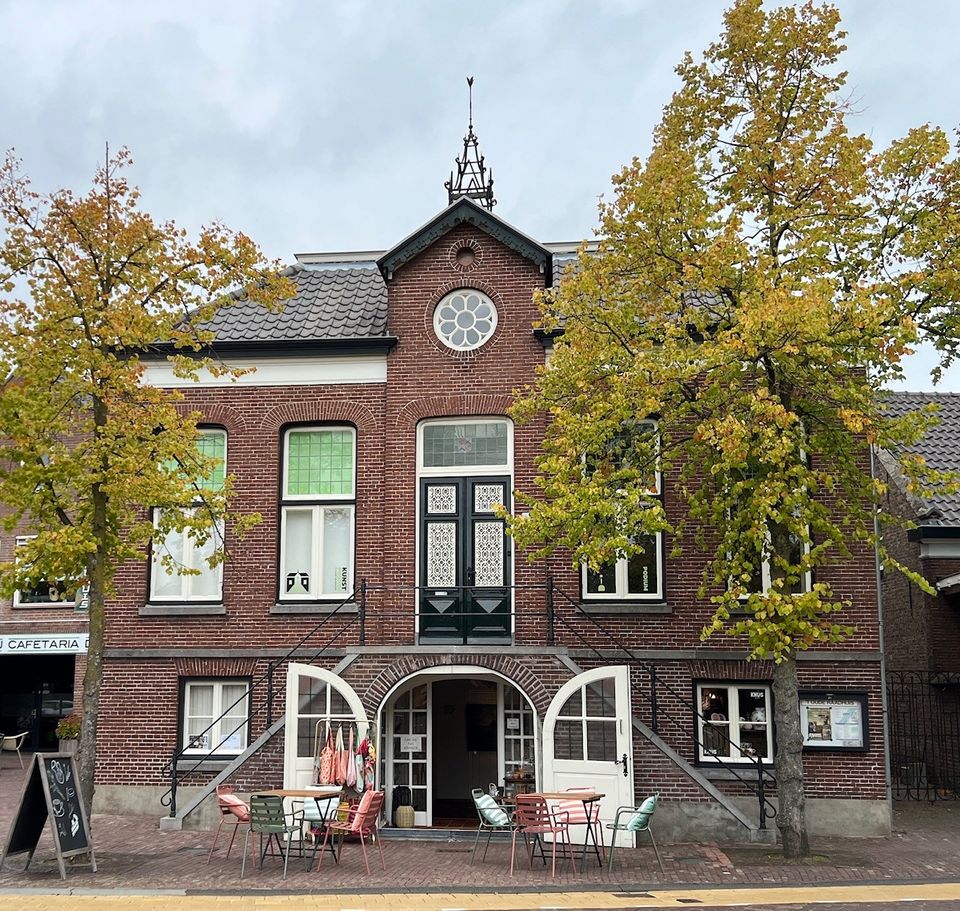't Oude Raadhuis
On the Heuvel in Beek en Donk stands the former council house of the municipality. The building, which was built in 1866-67 in traditional craftsmanship style by N. de Groot, is currently used as an exhibition area. In 1929-30, a council chamber was added on the northern side. This was demolished in 1980 when the building was converted into a residence.
Description:
The former town hall has a rectangular plan, is two storeys high and is covered b…
On the Heuvel in Beek en Donk stands the former council house of the municipality. The building, which was built in 1866-67 in traditional craftsmanship style by N. de Groot, is currently used as an exhibition area. In 1929-30, a council chamber was added on the northern side. This was demolished in 1980 when the building was converted into a residence.
Description:
The former town hall has a rectangular plan, is two storeys high and is covered by a truncated hipped roof with improved Dutch tiles. The building has a traditional layout: below the beletage, where the actual town hall was located, is the lower ground floor. A police station used to be housed here. The hand-shaped brick façades have a plastered plinth and a profiled eaves with a stucco frieze. The ground floor and the first floor are separated on the street side by a hardstone cordon. The façade of the building has five axes on the first floor. In the central, gabled centralrisal on this floor is a wing panel door (with cast iron door grilles and an upper light with stained glass filling), which is accessible via a bricked-up spiral staircase with cast iron handrail. The door is flanked on either side by two arched T-windows with casement windows and a high fanlight. There are also two such windows on the entrance floor of the west façade. The building has a gable with an eight-light oculus, above which is a small round light. On the gable roof, which covers the risalite, is an open wrought-iron roof chapel with a bell. The lower floor is accessed through a double, round-arched entrance door in the front staircase. The panel doors are partially glazed and have small window sections. In the street facade, there is a four-pane casement window on either side of the staircase.
Appreciation:
The object is of general importance. It is of cultural-historical importance as a special expression of an administrative development and as an example of the typological development of the rural council house. It is of architectural-historical importance due to the intactness of its exterior. It has ensemble values in relation to the visual integrity of the village surroundings.

